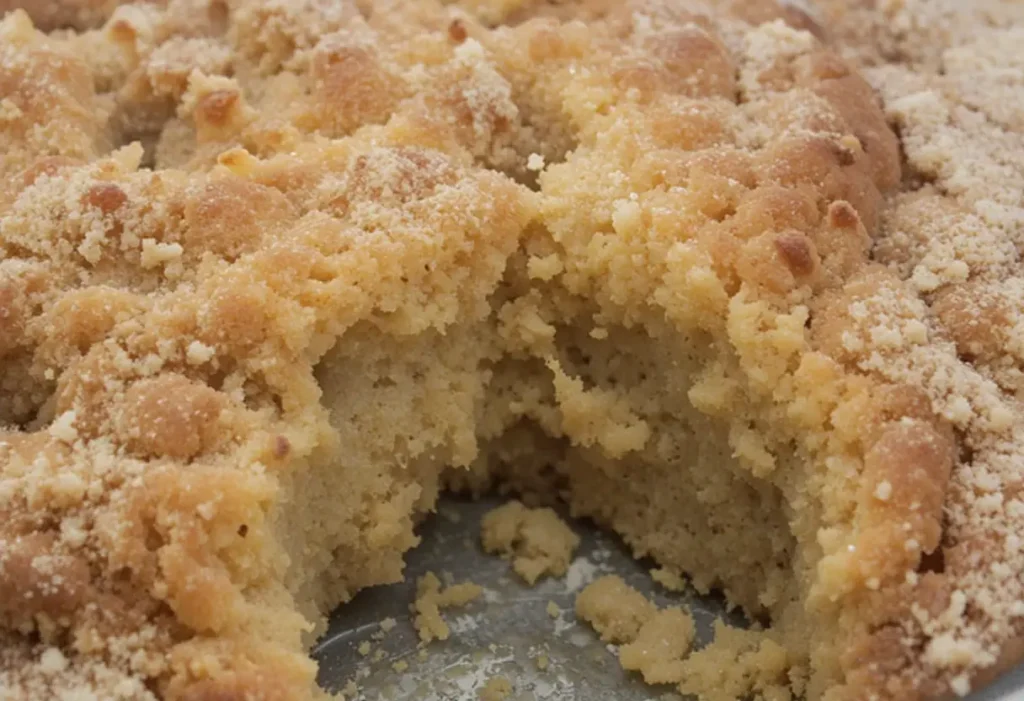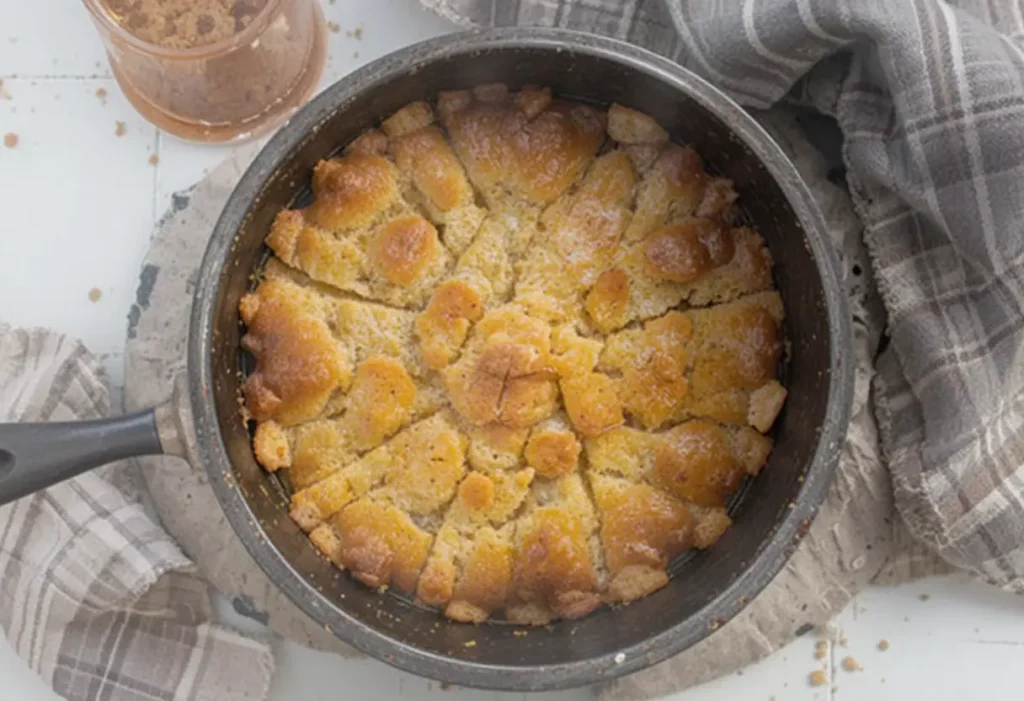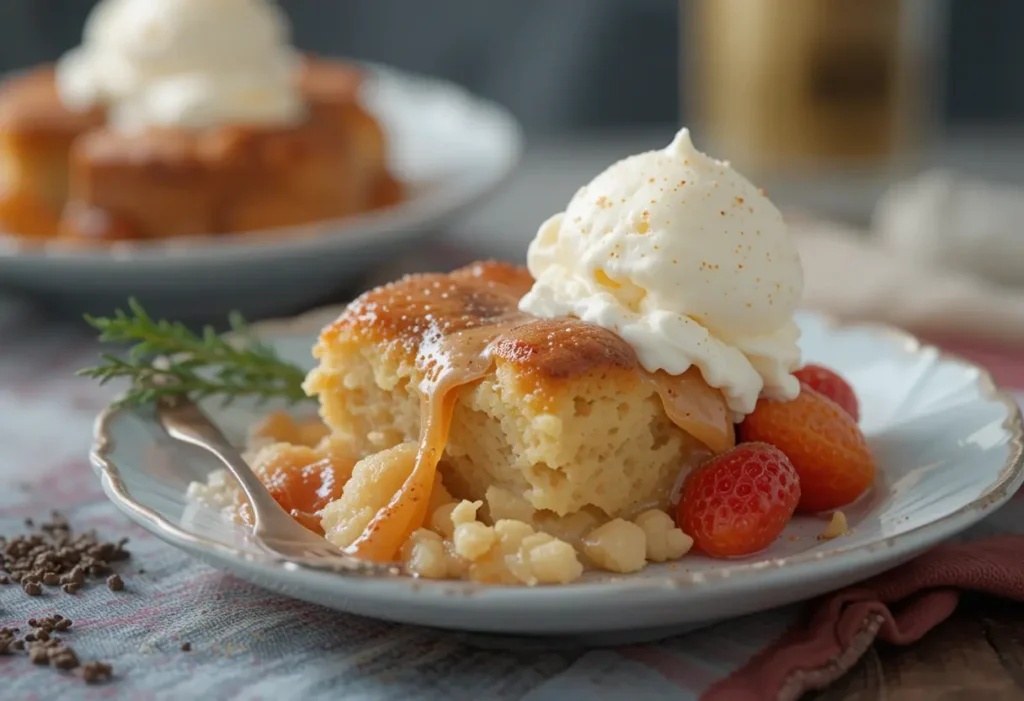Bread pudding, a classic dessert made from stale bread soaked in custard, has been a staple in kitchens for centuries. Its charm lies in its ability to transform humble ingredients into a delicious dish with a moist interior and a slightly crisp top. Yet, one question often arises among bakers: Should you cover your bread pudding while baking?
In this article, we’ll explore why covering bread pudding is important, when to uncover it, and how to avoid common baking mistakes. We’ll also provide practical tips to ensure your bread pudding is perfectly moist and flavorful.
What Is Bread Pudding?
Bread pudding was born out of necessity, created to minimize food waste by repurposing stale bread. Over time, it evolved into a much-loved dessert that pairs the soft texture of custard with the slightly crispy texture of baked bread. To explore how this dish can take on savory dimensions, check out Savory Bread Pudding.
Traditionally, pudding is made with:
- Cubes of stale bread (brioche, challah, or French bread are great options).
- A custard base made from eggs, milk, cream, and sugar.
- Flavorful additions like cinnamon, vanilla, or raisins.
Once mixed, the bread absorbs the custard, and the pudding is baked until set. The process seems simple, but key decisions—like whether to cover the dish—can dramatically impact the result.
Why Should You Cover Bread Pudding When Baking?
Covering bread pudding during baking is more than just a protective measure—it’s a way to control the baking environment for optimal results. Here are the primary benefits:
1. Prevents Burning
The bread on the top layer is directly exposed to the oven’s heat. Without covering, it can brown too quickly or even burn before the custard inside has fully cooked.
2. Retains Moisture
Aluminum foil or a lid traps steam inside the dish, keeping the custard moist. This prevents the bread from drying out and ensures the pudding has a creamy consistency.
3. Ensures Even Cooking
Bread pudding is a layered dish. Covering it promotes even heat distribution, so the top doesn’t cook faster than the center.
For more on how to balance moisture in baking, see the article on What is a Savory Pudding?.

When Should You Uncover the Dish?
To achieve the perfect bread pudding, covering is only part of the equation. The other crucial step is uncovering it at the right time. Here’s how to do it:
- Cover the bread pudding with aluminum foil or a lid for the majority of the baking time.
- Remove the cover for the last 10–15 minutes to allow the top to crisp up. This step adds the desired texture and visual appeal to the dish.
What Happens If You Don’t Cover Bread Pudding?
Skipping the covering step can lead to several issues that compromise the quality of your dessert:
1. Overly Crispy or Burnt Top
Exposed bread can brown too quickly, leading to a tough or burnt top layer.
2. Dry Texture
Moisture escapes from the custard if the pudding is uncovered, resulting in a dry and less enjoyable dish.
3. Uneven Baking
Without a cover, the outer layers of the pudding may overcook while the center remains underdone.
Expert Tips for Baking the Perfect Bread Pudding
The secret to mastering bread pudding lies in the details. Follow these tips for the best results:
1. Use the Right Bread
- Choose enriched breads like brioche, challah, or French bread. These absorb custard well and hold their structure during baking.
- Stale bread works best because it soaks up the liquid more effectively than fresh bread.
For inspiration on creative uses for bread, check out What Savoury Dish Can Be Made from Bread?.
2. Perfect Your Custard
- Use a mix of whole milk and heavy cream for richness.
- Balance flavors with vanilla extract, cinnamon, and nutmeg.
3. Master the Baking Process
- Preheat your oven to 350°F (175°C).
- Bake the pudding covered for 40–50 minutes, then uncover it for an additional 10–15 minutes to brown the top.
4. Test for Doneness
- Insert a toothpick into the center. It should come out clean but slightly moist.
- If the top isn’t browned enough after uncovering, broil it for 1–2 minutes.
Common Mistakes to Avoid
Even experienced bakers can make errors when preparing bread pudding. Here’s how to avoid the most common pitfalls:
Mistake 1: Skipping the Cover
Leaving the dish uncovered for the entire baking time can result in a dry and unevenly cooked pudding.
Mistake 2: Using Fresh Bread
Fresh bread tends to become mushy when soaked in custard. Opt for day-old or slightly stale bread instead.
Mistake 3: Overbaking
Excessive time in the oven can create a rubbery texture. Always keep an eye on the baking process.
Mistake 4: Ignoring Ratios
Too much liquid can make the pudding soggy, while too little can make it dry. Stick to the recipe’s recommended bread-to-custard ratio.

Creative Variations of Bread Pudding
Once you’ve mastered the basics, try experimenting with these variations:
- Savory Bread Pudding: Incorporate ingredients like cheese, herbs, and vegetables for a hearty twist. Learn more in Savory Bread Pudding.
- Fruit-Infused Pudding: Add dried fruits like raisins or cranberries for a sweet, tangy flavor.
- Chocolate Bread Pudding: Use cocoa powder or chocolate chips for a rich dessert.
Frequently Asked Questions
Do I Need to Cover Bread Pudding for All Recipes?
Not all recipes require covering. If your pudding has a high liquid-to-bread ratio, it may bake evenly without a cover. Follow the recipe’s instructions for the best results.
What Can I Use Instead of Aluminum Foil?
If you prefer not to use aluminum foil, parchment paper or a baking lid can work as alternatives. However, they may not trap steam as effectively.
How Do I Ensure the Top Stays Crispy?
Uncover the pudding during the last 10–15 minutes of baking. For extra crispness, broil the top for 1–2 minutes.
What’s the Best Bread for Bread Pudding?
Brioche, challah, or French bread are ideal due to their absorbent qualities and rich texture.
Can I Make Bread Pudding Ahead of Time?
Yes, you can assemble the pudding a day ahead and refrigerate it. Bake it fresh before serving for the best texture.
For more insights into bread pudding’s origins, see Where Bread Pudding Comes From.
Conclusion
Covering pudding while baking is essential for achieving a moist, creamy interior and a golden, crisp top. By using aluminum foil or an alternative cover, uncovering it at the right time, and following expert tips, you can perfect this timeless dessert.
For additional ideas and inspiration, explore Savory Bread Pudding and other recipes on Tomade Recipy. With these techniques, your bread pudding is sure to delight family and friends every time!

